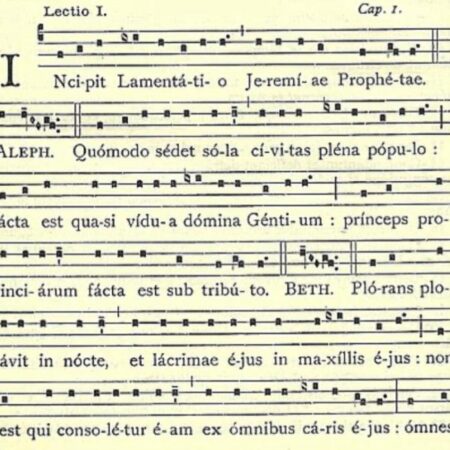On Wednesday of Holy Week we will offer the service of Tenebrae. This ancient service goes back over a thousand years, to the monasteries of Europe. It consists of MaBns and Lauds, the first two of the eight monasBc daily offices or “hours” for Maundy Thursday. In the monasBc tradiBon these services could be anBcipated the evening before. So we have MaBns and Lauds for Maundy Thursday sung on the evening of Wednesday of Holy Week.
Musically the service of MaBns consists of: three sung psalms, each preceded and followed by a related anBphon: and then three sung readings, each followed by harmonised “responds”.
That structure is itself repeated three Bmes. The first three readings use a parBcularly haunBng tone specifically for the LamentaBons of Jeremiah: “Jerusalem, return unto the Lord thy God”. Lauds follows, which consists also of sung psalms and anBphons, followed by the Song of Moses and the Benedictus. The service concludes with Allegri’s seOng of Psalm 51, Miserere mei. This is performed oSen, and borrowed in film soundtracks. But this is the liturgy that it was composed for.
The congregaBon parBcipates silently throughout the service. At points all stand and the priest begins the “Our Father” or “Hail Mary”: the rest of the prayer is not said, but prayed silently. All sit, and the service goes on. The whole service lasts about two hours. It can be unseUling and disorienBng the first Bme you aUend. That is part of its power.
Tenebrae – “darkness” – does not just reflect the events of Good Friday which the service prepares us for. It also reflects the fact that as the service proceeds, one candle is exBnguished aSer each of the 15 sung psalms, ending in total darkness. A loud noise is made behind the altar, reminding us of the earthquake (MaUhew 27:51). A single candle is then brought from behind the altar: a faint, future possibility of hope.
Jonathan Robinson



